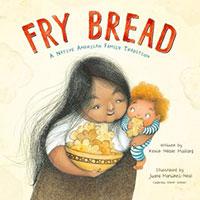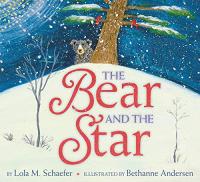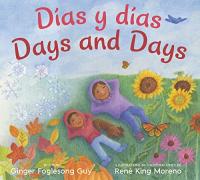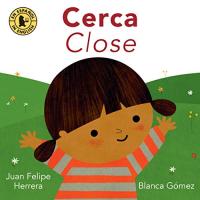
Though they’re quite different, calm and patient Fox remains friends with Chick. Unlike Fox, Chick tends to worry and fret in each of three short tales told through illustration and conversation bubbles. Newly independent readers will appreciate the accessible comic book format and relatable emotions expressed in text and image.
The Quiet Boat Ride and Other Stories

One “famished fox “with 2 “sly eyes” and 10 “sharp teeth” gradually creeps up to an unsuspecting hen house. Suddenly, with feathers flying, “100 angry hems” scare off one “frightened fox.” Brief text and dramatic illustrations combine to present a tense, humorous, and very satisfying story combined with counting from 1 to 10.
One Fox: A Counting Book Thriller

Poodle Polly belongs to Molly. Eric, a dachshund, belongs to Derek. But for the poor, large, older mutt named Mr. Scruff, there’s no one. That is until small Jim meets him — and even though their names don’t rhyme, they become fast friends. Whimsical illustrations add charm to this affable, rhyming story.
Mr. Scruff

When the younger brother describes his sister, she’s pictured as a rhinoceros, a boring, bossy bully. Flip the book over, and it’s the sister who sees her brother as a noisy, annoying monkey. They come together to realize that maybe two kids in “the family isn’t so bad.” But then with a “Waaaa,” a third sibling arrives! This humorous look at sibling dynamics is sure to resonate.
Little Bro, Big Sis

A child looks out from an apartment window assured that the wind and sky will be there if she wants to fly. The lyrical reassurances continue as children continue on different adventures, imaginatively portrayed in the artist’s signature bold, childlike style. Altogether, this is a comforting, cozy book to share again and again.
Just in Case You Want to Fly

A father warmly and creatively answers his child’s endless questions: “Why is the ocean blue?” (“Because every night fish play sad songs and cry blue tears.”) The final question, “Why do we have to sleep?” is answered, “Because there are some things we can only see with our eyes closed.” Stylized illustrations suggest a timeless quality to a child’s curiosity and a parent’s patience.
Just Because

Join the narrator’s rhyming examination of his house, including things one doesn’t always see. For instance, in the room where the family bakes, “we sing into spoons and get covered in cake!” Each room holds special pleasure. A double gatefold opens up an entire block of houses, concluding “… our house is something like yours!”
In Every House on Every Street

Poor porcupine! No one will give the prickly (but needy) critter a hug. Not Lou the rabbit, not Ken the deer, not even big bear, Joe. They are all afraid of the green kiss-seeking snake. But porcupine isn’t! Animated, comical illustrations combine with conversation bubbles to tell a very funny, understated, and satisfying story.
I Need a Hug

Ben got the best birthday present of all when he walked into his classroom that day. Until then, after being teased at school, Ben hid his love for colorful fingernails, only painting them on weekends. His friend Margarita and Ben’s parents had always been supportive, but now everyone would share Ben’s joy. Line and wash illustrations complement this unique way of accepting differences.
I Love My Colorful Nails

What is fry bread? It’s food, shape, sound, art, history, and more — so much more. It is an American Indian tradition shared by a member of the Mekusukey Seminoles. A varied group of children and elders are depicted contributing to the recipe as the text describes its complex role in American history. Additional information is appended to create a book that can be used in both simple and complex ways.
Fry Bread: A Native American Family Story

Are hats for cats? Not according to a large dog that goes on to declare that no hats, big or small are simply “… not for cats at all.” The lively descriptions of all kinds of hats (pirate or party, silly or frilly) are accompanied by equally jaunty illustrations that convey not only action but cat and dog emotions finally affirming that “Hats are for everyone!”
Hats Are Not for Cats

The story begins before a family with two parents, one child in a stroller, and a lively older boy reach the steps of the museum. The boy acquires a flying toy that leads first to misunderstanding but ultimately friendship. Few words are needed as the detailed, expressive line and wash illustrations convey action and emotion to bring the tale full circle to its satisfying conclusion.
Explorers

Hally, the Tosis family dog, suffers from a very big problem: she has terrible breath. This, of course, is a major issue for the family and the Tosis’ entire community, until Hally saves the day! She thwarts serial burglars with her daunting exhalation. The silly and (sort of) gross humor first published in 1994 is available again.
Dog Breath: The Horrible Trouble with Hally Tosis

Textured, verdant illustrations use different perspectives to contrast big and small, differences, and commonalities. A rhinoceros and rhinoceros beetle are pictured alone and together punctuating the straightforward text in this quiet visual feast which may generate both questions and discussion.
A Different Story

It takes a keen eye to help Little Woof find the color-changing cat! After a clearly shown dog and cat set up the search, with a turn of the page they are hidden in a predominately green outdoor scene followed by more brightly hued places. Once the end is reached, readers will start all over again as Little Woof will change colors for the cat to chase.
Catch Me: A Seek-And Find Book

“Early one December morning, Bear woke …” and saw a “new star, barely visible …” Bear began his search for an evergreen tree that would stand tall and strong. Then people gathered from around the world as the “tree [grew] stronger and taller … because it was time for peace.” Rich, snow-filled illustrations complement the lyrical, semi-abstract narration. Though not obviously a holiday story, it may be perceived as one.
The Bear and the Star

Astrid tells her father that she wants to be an astronaut, and is not deterred when her father asks her if she can eat food from a package and go round and round the earth in a spaceship. When her mother gets home, Astrid, embraced by both parents, proclaims,“I want to be an astronaut just like you [her mother].” Uncluttered illustrations simply but effectively depict Astrid’s loving family.
Astro Girl

Several generations of a family prepare for a meal together. Told in the cadence of a familiar rhyme, each member — from the youngest to the oldest — contributes to the celebratory occasion. Bright, childlike illustrations capture the fun and food for a festive meal shared “around the table that Grandad built.”
Around the Table That Grandad Built

A pictorial clue accompanies the question, “Whose footprint is that?” The footprint appears on the opposing page. A turn of the page reveals the answer with a picture of the mystery animal. What animal can change footprints? Only one! When humans change footwear so does their footprint, and different footwear may lead to further exploration.
Whose Footprint Is That?

From a lap to sit on to “this earth we ride on…” people and animals are grateful for the everyday things they see and experience. Idealized illustrations complement the text to focus on simple, commonplace pleasures.
The Thank You Book

Playful illustrations in brilliant colors depict charming, expressive, almost childlike but recognizable animals. Numerals accompanied by one word on each sturdy, double-page spread encourage counting from 1 belly (on a teddy bear) to an alligator’s 10 teeth. An endnote offers concrete ideas for adults to encourage counting beyond the pages of this engaging book.
From 1 to 10

A snowy landscape: “Brrr… Invierno. Winter.” But winter turns to spring, then summer, followed by autumn, and finally a new year. Single words in both English and Spanish combine with gentle illustrations to present children and families throughout the seasons.
Dias y dias / Days and Days

Explore colors in crisp photographs and brief language. Blocks of different hues show color variations and accompany a picture and a brief descriptor (e.g., a photo of a frog combines with “Green hops.”). Turn the page and other images complement the lyrical text for a very satisfying introduction to colors in the real world.
Colors

Simple concepts are presented in straightforward language in both Spanish and English. On each sturdy double page is a crisp illustration that uses simple line and flat form. The result is a precise, highly accessible look at the basic concepts of near and far. You may also want to share Lejos / Far (opens in a new window).
